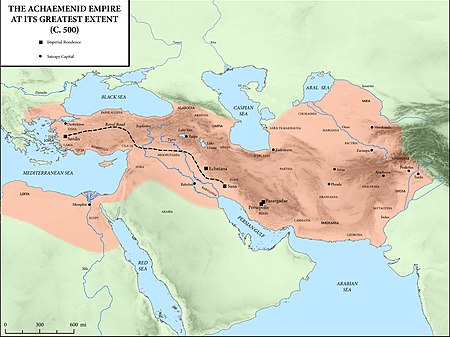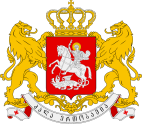Diauehi
| ||||||||||||||||||||||||||||||||||||||||||||||||||||||||
Read other articles:

Vendeuvre-du-PoitoucomuneVendeuvre-du-Poitou – Veduta LocalizzazioneStato Francia Regione Nuova Aquitania Dipartimento Vienne ArrondissementPoitiers CantoneJaunay-Clan TerritorioCoordinate46°44′N 0°19′E / 46.733333°N 0.316667°E46.733333; 0.316667 (Vendeuvre-du-Poitou)Coordinate: 46°44′N 0°19′E / 46.733333°N 0.316667°E46.733333; 0.316667 (Vendeuvre-du-Poitou) Superficie41,41 km² Abitanti2 998[1] (2009) Densità…

Indian Film Award 55th Filmfare AwardsDate27 February 2010SiteYash Raj Studios, MumbaiHosted byShahrukh KhanSaif Ali KhanShruti HaasanKaran JoharSiddharthOfficial websitewww.filmfare.comHighlightsBest Film3 IdiotsCritics Awardfor Best FilmFiraaqMost awards3 Idiots & Dev.D (6)Most nominationsLove Aaj Kal (12)Television coverageNetworkSony Entertainment Television (India) ← 54th Filmfare Awards 56th → The 55th Filmfare Awards were held on 27 February 2010 at the Yash Raj …

Ada Međica Ада МеђицаKawasan perkotaanRumah kapal (Splavovi) di Sungai SavaKoordinat: 44°47′N 20°23′E / 44.783°N 20.383°E / 44.783; 20.383Koordinat: 44°47′N 20°23′E / 44.783°N 20.383°E / 44.783; 20.383Negara SerbiaRegionBeogradMunisipalitasNovi BeogradZona waktuUTC+1 (CET) • Musim panas (DST)UTC+2 (CEST)Kode area telepon+381(0)11Plat mobilBG Ada Međica (bahasa Serbia: Ада Међица) adalah sebua…

Province of the Persian Empires The territory of Maka (𓅓𓂝𓎼, M-ā-g)[citation needed] on the Statue of Darius I.Makan on the tomb of Artaxerxes I, c. 430 BC.Makan with cuneiform identification label on the tomb of Artaxerxes II, c. 360 BC.Maka soldier of the Achaemenid army, c. 338 BC. Tomb of Artaxerxes III. Maka (Old Persian: 𐎶𐎣 Maka-)[1] was a satrapy (province) of the Achaemenid Empire and later a satrapy of the Parthian and Sassanian empires (…

Guangzhou F.C. 2010 Football team seasonGuangzhou F.C. 2010Chairman Liu YongzhuoHead coach Lee Jang-Soo Li Chunman (in name)StadiumZengcheng StadiumCentury Lotus StadiumYuexiushan StadiumLeague One1stTop goalscorer Gao Lin (20 goals) Home colours Away colours ← 20092011 → The 2010 season is the 57th year in Guangzhou Football Club's existence, their 43rd season in the Chinese football league. The club was relegated to China League One in the fallout of …

For other uses, see Madonna (disambiguation). 1968 single by the BeatlesLady MadonnaUS picture sleeveSingle by the BeatlesB-sideThe Inner LightReleased15 March 1968 (1968-03-15)Recorded3 and 6 February 1968StudioEMI, LondonGenre Rock and roll[1] R&B[2] boogie-woogie[3] pop rock[4] Length2:16Label Parlophone (UK) Capitol (US) Songwriter(s)Lennon–McCartneyProducer(s)George MartinThe Beatles singles chronology Hello, Goodbye (1967) Lady Madonna (…

Abdul Hamid ISultan Thổ Nhĩ Kỳ Sultan của đế quốc OttomanKhalip của Hồi giáoTại vị1774 - 1789Tiền nhiệmMustafa IIIKế nhiệmSelim IIIThông tin chungSinh20 tháng 3 năm 1725Istanbul, Thổ Nhĩ KỳMất7 tháng 4 năm 1789An tángBahcekapi, ThổVợ và conXem văn bảnTên đầy đủSultan Abdul Hamid IThân phụAhmed IIIThân mẫuRabi Semi Sultana Abdul Hamid I (hay còn gọi là Abdülhamid I) (20 tháng 3 năm 1725 – 7 tháng 4 năm 1789) là vị su…

本條目存在以下問題,請協助改善本條目或在討論頁針對議題發表看法。 此條目需要編修,以確保文法、用詞、语气、格式、標點等使用恰当。 (2013年8月6日)請按照校對指引,幫助编辑這個條目。(幫助、討論) 此條目剧情、虛構用語或人物介紹过长过细,需清理无关故事主轴的细节、用語和角色介紹。 (2020年10月6日)劇情、用語和人物介紹都只是用於了解故事主軸,輔助讀�…

هذه المقالة بحاجة لصندوق معلومات. فضلًا ساعد في تحسين هذه المقالة بإضافة صندوق معلومات مخصص إليها. جبن عربي بلدي صناعة أردنية الجبن البلدي جبن لين أبيض منتشر في الشرق الأوسط. يحتوي على نكهة خفيفة غنية.[1] طالع أيضا فيتا مصادر ^ Baladi Cheese Phoenicia.com. مؤرشف من الأصل في 2013-01-31. اطلع ع…

British politician The Right HonourableThe Lord DovercourtChairman of the National Liberal PartyIn office1946–1947Preceded byJames Henderson-StewartSucceeded byJohn MaclayMember of Parliamentfor HarwichIn office14 November 1935 – 18 January 1954Preceded byJohn PybusSucceeded byJulian RidsdaleMember of Parliamentfor North East DerbyshireIn office14 December 1918 – 26 October 1922Preceded byGeorge Robert Harland BowdenSucceeded byFrank Lee Personal detailsBornJoseph Stanley…

18th and 19th-century German philosopher and theologian (1765–1841) Franz Xaver von Baader Franz von Baader (27 March 1765 – 23 May 1841), born Benedikt Franz Xaver Baader, was a German Catholic philosopher, theologian, physician, and mining engineer. Resisting the empiricism of his day, he denounced most Western philosophy since Descartes as trending into atheism and has been considered a revival of the Scholastic school. He was one of the most influential theologians of his age but hi…

Peta lokasi APCN 2. APCN 2 atau Asia Pacific Cable Network 2 adalah sistem kabel komunikasi bawah laut dengan panjang 19000 km.[1] APCN 2 menghubungkan negara Asia Pasifik di antaranya adalah Jepang, Korea, Tiongkok, Taiwan, Hong Kong, Filipina, Malaysia, dan Singapura.[1] APCN2 memiliki teknologi kabel fiber optik dan beberapa pasang kabel utama yang menghubungkan 10 stasiun kabel bawah laut daerah Asia anggota APCN 2.[1] Perusahaan yang memegang proyek pengerjaan k…

Sir William Blackstone Sir William Blackstone (lahir 10 Juli 1723 di London, Inggris - meninggal 14 Februari 1780 di Patrick, Oxfordshire pada umur 56 tahun) adalah seorang ahli hukum berkebangsaan Inggris yang banyak berkomentar tentang hukum-hukum Inggris.[1] Hasil kerjanya di bidang hukum menjadi dasar pendidikan hukum di universitas di Inggris dan Amerika Utara.[1] Ia merupakan salah satu perumus tetap Konstitusi Amerika Serikat dan Deklarasi Kemerdekaan.[2] Pada 1741…

Gymnasticsat the Games of the XXV OlympiadVenuePalau Sant Jordi (artistic)Palau dels Esports de Barcelona (rhythmic)Dates26 July – 8 August 1992← 19881996 → Gymnastics at the1992 Summer OlympicsList of gymnastsArtisticTeam all-aroundmenwomenIndividual all-aroundmenwomenVaultmenwomenFloormenwomenPommel horsemenRingsmenParallel barsmenHorizontal barmenUneven barswomenBalance beamwomenRhythmicIndividual all-aroundwomenvte At the 1992 Summer Olympics, two different gymnastics…

Period of the Ottoman empire This article needs additional citations for verification. Please help improve this article by adding citations to reliable sources. Unsourced material may be challenged and removed.Find sources: Decline and modernization of the Ottoman Empire – news · newspapers · books · scholar · JSTOR (September 2016) (Learn how and when to remove this message) Part of a series on the History of theOttoman Empire Timeline Rise (1299–1…

توزيع سكان العالم عام 1994 يشير تعداد السكان عادةً إلى عدد الأشخاص في منطقة واحدة سواء كانت مدينة أو بلدة أو منطقة أو بلدًا أو العالم.[1][2][3] تحدد الحكومات عادةً حجم السكان المقيمين ضمن ولايتها القضائية من خلال عملية تسمى التعداد (عملية لجمع وتحليل وتجميع ونشر البيا…

Veterans cemetery in Honolulu, Hawaii, United States National Memorial Cemeteryof the PacificNational Memorial Cemetery of the Pacific.DetailsEstablished1949LocationHonolulu, HawaiiCountryUnited StatesCoordinates21°18′46″N 157°50′47″W / 21.31278°N 157.84639°W / 21.31278; -157.84639TypeUnited States National CemeteryOwned byNational Cemetery AdministrationNo. of graves>61,000Websitehttps://www.cem.va.gov/cems/nchp/nmcp.aspFind a GraveNational Memorial Cemete…

فحص مقدار الهبوط بالخرسانة. فحص الهبوط للخرسانة ويعرف أيضا ب التهدّل (بالإنجليزية: Concrete slump test) هو اختبار تجريبي يُستخدم للتحقق من اتساق واستقامة الخرسانة. يتم ذلك من خلال استخدام مخروط خاص لقياس الهبوط وتحديد قابلية الخرسانة للتشغيل (Workability) ولتحديد قوامها ونسبة الماء اللاز�…

1942–1945 Japanese military rule over West Sumatra Japanese-occupied West Coast SumatraWest Coast Province of Sumatraスマトラ西海岸州 (Japanese)1942–1945 Flag of the Empire of Japan Imperial Seal Motto: 八紘一宇 (Hakkō Ichiu)(Eight Crown Cords, One Roof)Anthem: KimigayoWest Coast Sumatra (dark red) within the Japanese occupation of the Dutch East Indies (red)StatusProvince under military occupation by the Empire of JapanCapitalPadang[1]Common language…

Head of the Catholic Church from 257 to 258 Pope SaintSixtus IIBishop of RomeFresco of Pope Sixtus II by Sandro Botticelli in the Sistine Chapel.ChurchEarly ChurchPapacy began31 August 257Papacy ended6 August 258PredecessorStephen ISuccessorDionysiusPersonal detailsBornUnknownGreece, Roman EmpireDied(258-08-06)6 August 258Rome, Roman EmpireSainthoodFeast day6/7 AugustVenerated inCatholic Church, Eastern Orthodox ChurchOther popes named Sixtus Pope Sixtus II (Greek: Πάπας Σίξτος Β΄),…




